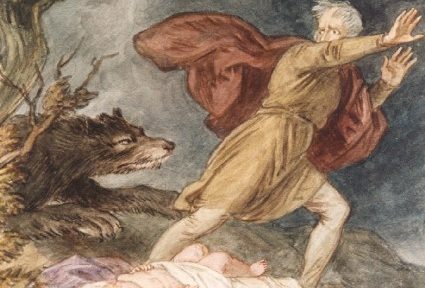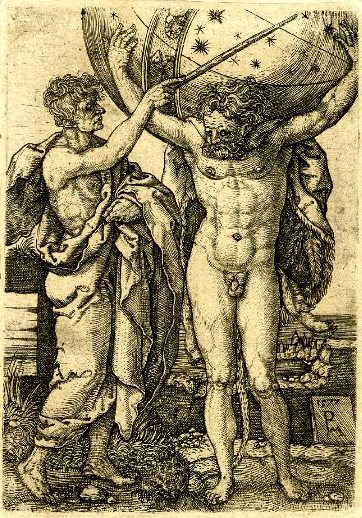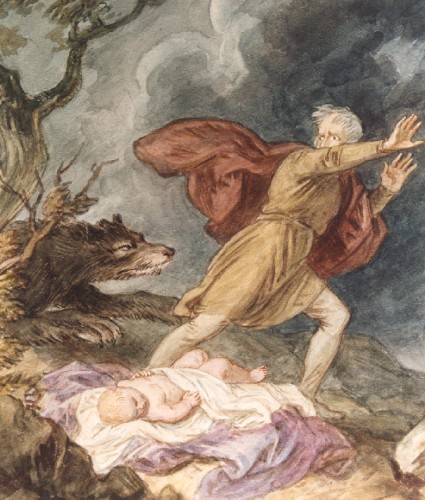This article was contributed by Rebecca Clossick, a student on Birkbeck’s MA Renaissance Studies
This season research at the Globe focused primarily on the experimental platform that is the Sam Wanamaker Playhouse; the indoor Jacobean theatre archetype. The first few years of productions have provided enormous research potential for the study of early modern indoor theatre practices and audience reception, and the Education department is now collating and analysing the findings. As a research intern at this exciting time, many tasks related to gathering evidence for the Indoor Performance Practice project, coordinated by Dr Will Tosh, for the forthcoming publication Playing Indoors: Staging Early Modern Drama in the Sam Wanamaker Playhouse (Bloomsbury Arden Shakespeare).
Identifying the strategic way in which the Globe promoted the four major tragedies of the opening season in the Sam Wanamaker Playhouse – drawing on ideas of Jacobean sensationalism and how extensively candlelight was central to sensual appeal – provided insight into how a modern theatre venue specialises in observing historic practice and attempts to imaginatively recreate experiences of past audiences. Indeed, the candlelit interior is celebrated as its most appealing feature.
![Frontispiece to The Wits, or Sport upon Sport, being a curious collection of several drols and farces, etc. (Written by ... Shake-spear, Fletcher, Johnson, Shirley, and others.) (pt. I.), (London: Francis Kirkman, 1673) The British Library, [accessed 05 March 2017]](http://blogs.bbk.ac.uk/bbkcomments/files/2017/03/Fig1.png)
Frontispiece to The Wits, or Sport upon Sport, being a curious collection of several drols and farces, etc. (Written by … Shake-spear, Fletcher, Johnson, Shirley, and others.) (pt. I.), (London: Francis Kirkman, 1673) The British Library [accessed 05 March 2017]
An indoor Jacobean theatre would have glittered by candlelight, although since critics rarely commented on lighting, there is little contemporary evidence on which to base interpretations of the early modern experience. Seeking to emulate early modern indoor playing conditions, the Sam Wanamaker productions incorporate live flame emitted from handheld candlesticks, chandeliers suspended from above the stage, and wall brackets housing individual candles. Investigating the significance of lighting changes on the indoor playhouse experience proved fascinating. Concentrating focus on one tiny aspect of performance illuminated the potential for new research into the text and reception, as well as the space.

George Wither, 105, A collection of Emblemes, Ancient and Moderne : Quickened with metricall illustrations, both Morall and divine: And disposed into lotteries, that instruction, and good counsell, may bee furthered by an honest and pleasant recreation (London: 1635), Pennsylvania State University Libraries.
The various forms of artificial lighting used at the Sam Wanamaker – such as lanterns, candelabras, torches, window shutters controlling exterior light, under seat electric house lights – and their choreography was gathered from DVD recordings of performances, and from directors’ prompt books and stage management notes held in the Globe’s archive – some of which contained their own chandelier and candle plot, indicative perhaps of the pivotal efficacy of varied light. The unanticipated discovery that each director has a vastly different management style, as evidenced in the highly-detailed prompt books for each production, also emphasises the continued creative attempts to interpret and re-enact the practical aspects of early modern theatre, while simultaneously crafting a unique and unforgettable experience for modern audiences.

Francis Quarles, Quarles Emblemes 037_ pgs 072-073, Emblems, divine and moral, together with Hieroglyphicks of the life of man (London: 1635), Sig. 56, Pennsylvania State University Libraries.
The Sam Wanamaker production of John Webster’s macabre tragedy, The Duchess of Malfi, was the opening show in the space and the first to experiment extensively with lighting changes. Contrary to what may be perceived as merely ostentatious means of illuminating performance, the nuanced use of candlelight contributed to intricacies within the plot relating to elements such as suspense and character development. Scenes were shaped by changes in lighting ranging from actors blocking the only source of onstage candlelight, casting shadows about, to the raising and lowering of candelabra, and at one point total darkness descended upon the entire theatre as all light was extinguished. As research progressed, the function of candlelight proved increasingly to be one of the most significant elements contributing to the psychological intimacy of the play.

Francis Quarles, Quarles Emblemes 035_ pgs 068-069, Emblems, divine and moral, together with Hieroglyphicks of the life of man (London: 1635), Sig. 53, Pennsylvania State University Libraries.
Indeed, R. B. Graves suggests that indoor artificial stage lights were in fact used ‘to indicate darkness, not to increase the sense of brightness in the play or the theater’.[6] Modern practitioners have often interpreted this with actors entering holding up lanterns on an otherwise unlit stage, signifying attempts to light their way through the black of night. Certainly, for Jacobean tragedy, the stark contrast between small, flickering flame and the blackness beyond heighten the sense of isolation, vulnerability, and physical and psychological torment.
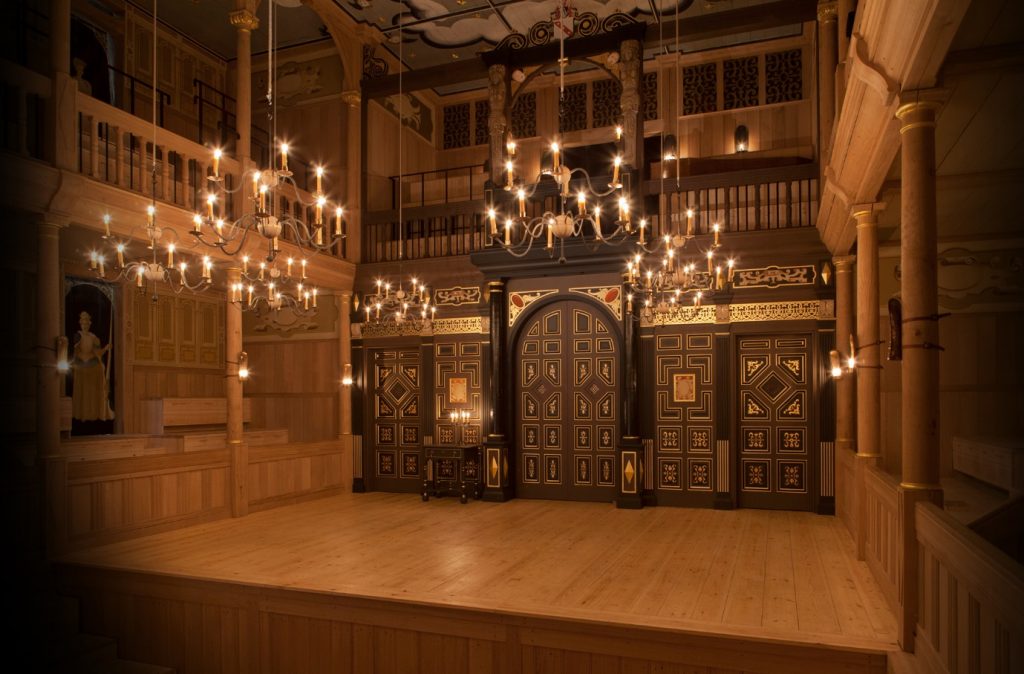
Copyright: Pete Le May, Interior of Sam Wanamaker Playhouse (2014), photograph, The Globe Theatre, London.
The Sam Wanamaker Playhouse is an ongoing project that attempts to recreate the early modern indoor playhouse, such as the Blackfriars model, developing theatre practices around it. Watching a production at the indoor theatre is a thrilling experience, not only due to the early modern design features and elaborate interior around which it was conceived, but also to the splendid artistic effects employed within performance. As a supporter of the endeavour since its inception, and observing the marvellous production runs rouse many a curious onlooker, it was an honour and a pleasure to be afforded the opportunity to work in the treasure trove that is the Globe’s library and archive, researching the appeal of indoor playing both today and four hundred years ago. The research internship concluded as the playhouse prepared to run its first indoor production of one of the most complex and sophisticated of revenge dramas, Webster’s The White Devil, a tale of corruption and hypocrisy, where the lighting configuration will undoubtedly complement the sinister plot.
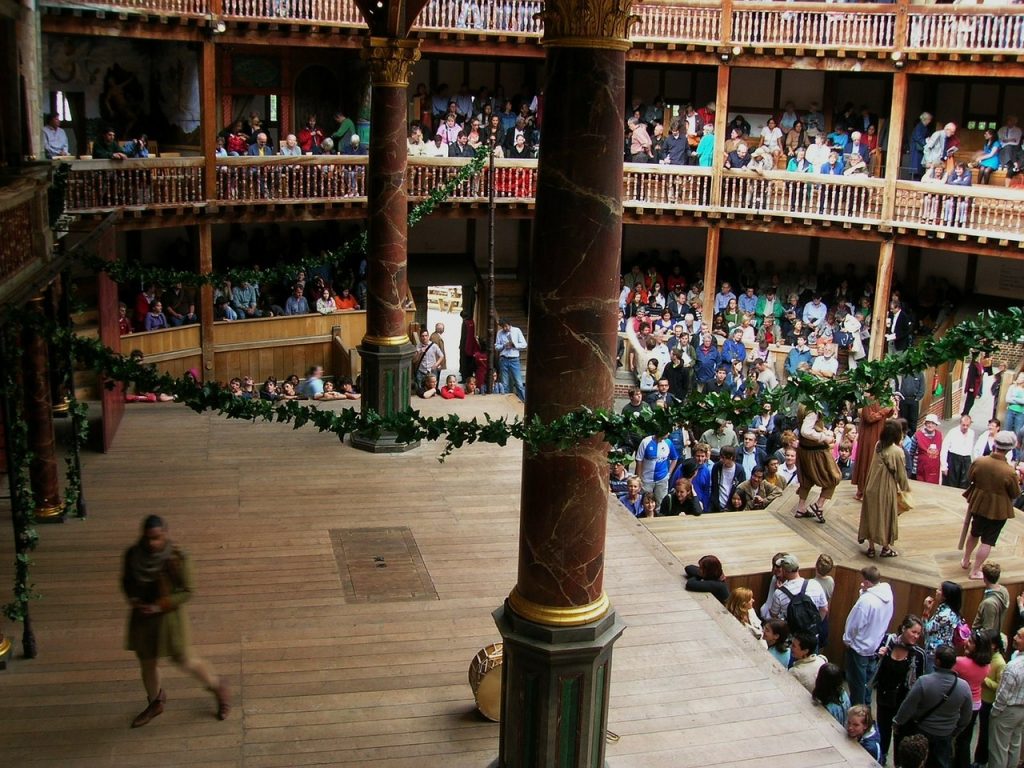 Every Tuesday began with a wintery riverside walk from Embankment to Bankside to work with an early modern treasure trove of books and archival material at Shakespeare’s Globe. The vast spectrum of material that I was exposed to fed my intellectual curiosity as an early modern theatre enthusiast!
Every Tuesday began with a wintery riverside walk from Embankment to Bankside to work with an early modern treasure trove of books and archival material at Shakespeare’s Globe. The vast spectrum of material that I was exposed to fed my intellectual curiosity as an early modern theatre enthusiast!
![Frontispiece to The Wits, or Sport upon Sport, being a curious collection of several drols and farces, etc. (Written by ... Shake-spear, Fletcher, Johnson, Shirley, and others.) (pt. I.), (London: Francis Kirkman, 1673) The British Library, [accessed 05 March 2017]](http://blogs.bbk.ac.uk/bbkcomments/files/2017/03/Fig1.png)




